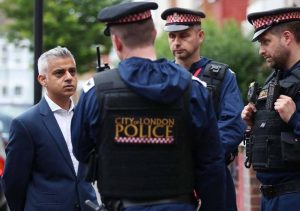Top fifth of Turkish population gets 47.2 percent of national income: Survey
The richest top 20 percent of society in Turkey received 47.2 percent of total income in 2016, marking a slight increase from the previous year, according to Turkish Statistical Institute (TÜİK) figures.

The richest top 20 percent of society in Turkey received 47.2 percent of total income in 2016, marking a slight increase from the previous year, according to Turkish Statistical Institute (TÜİK) figures.
The latest “Income and Living Conditions Survey,” published on Sept. 18, showed that the ratio of the annual income of the 20 percent at the bottom of the pyramid also increased but by a smaller proportion.
The share of the top quintile by the equalized household disposable income was 47.2 percent, recording an increase of 0.7 points, while the share of the bottom quintile was 6.2 percent, with an increase of 0.1 points in comparison with the previous year.
The income quintile share ratio, calculated as the ratio of total income received by the richest 20 percent of the population to that received by the poorest 20 percent of the population, thus increased from 7.6 to 7.7 percent.
Income inequality increased by 0.007 points compared to the previous year, according to these figures.
Equalized household disposable income is calculated from the disposable income of each household divided by equalized household size, which takes into account the adult-child composition of households by means of household equivalence scale.
Mean annual equalized household disposable income was calculated at 19,139 Turkish Liras, which is roughly $5,520 when calculated over a Sept. 18 exchange rate. This figure was up from 16,515 liras in 2015.
The rate of wage and salaries remained unchanged from the previous year, getting the highest rate with 49.7 percent of total equalized household disposable income. This was followed by entrepreneurial incomes with an increase of 1 point from 2015 (19.8 percent), and social transfers with a drop of 0.4 points (19.6 percent).
Pensions and survivor’ benefits composed 91.8 percent of social transfers, whereas non-agricultural income composed 74.7 percent of entrepreneurial incomes.
In addition, the persistent at-risk-of-poverty-rate was 14.6 percent in 2016, down from 15.8 percent in 2015.
The at-risk-of-poverty-rate, based on the poverty threshold set at 50 percent of median household disposable income, was 14.3 percent, with a decrease of 0.4 points. The at-risk-of-poverty-rate based on the poverty threshold set at 60 percent of median income was 21.2 percent, with a decrease of 0.7 points from the previous year.
The survey also showed that 26.2 percent of illiterate people and 1.7 percent of higher education graduates can be classified as “poor.” The figures for non-high school graduates and high school graduates were 12.5 percent and 6.2 percent respectively.
In 2016, while 42.2 percent experienced heating problems in their homes, 38.1 percent of the population had problems such as leaking roofs, damp walls, floors or foundations, rot in window frames/floors, and 24.5 percent had problems related to pollution, dirt, traffic, industry or other environmental issues.
Some 68 percent of the population is unable to afford replacing worn-out furniture, 65.4 percent had installments or loans (other than mortgages and housing costs), and 17.4 percent regard housing costs as a “heavy financial burden.” (HÜRRİYETDAILYNEWS)









